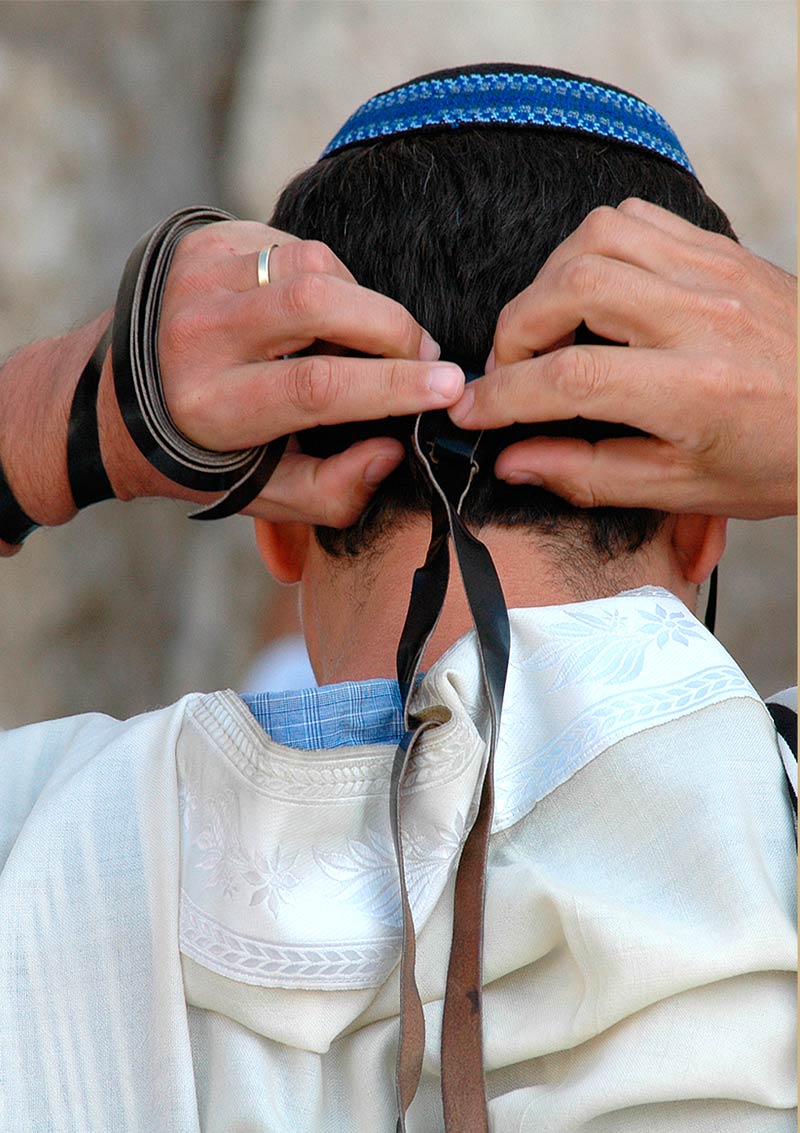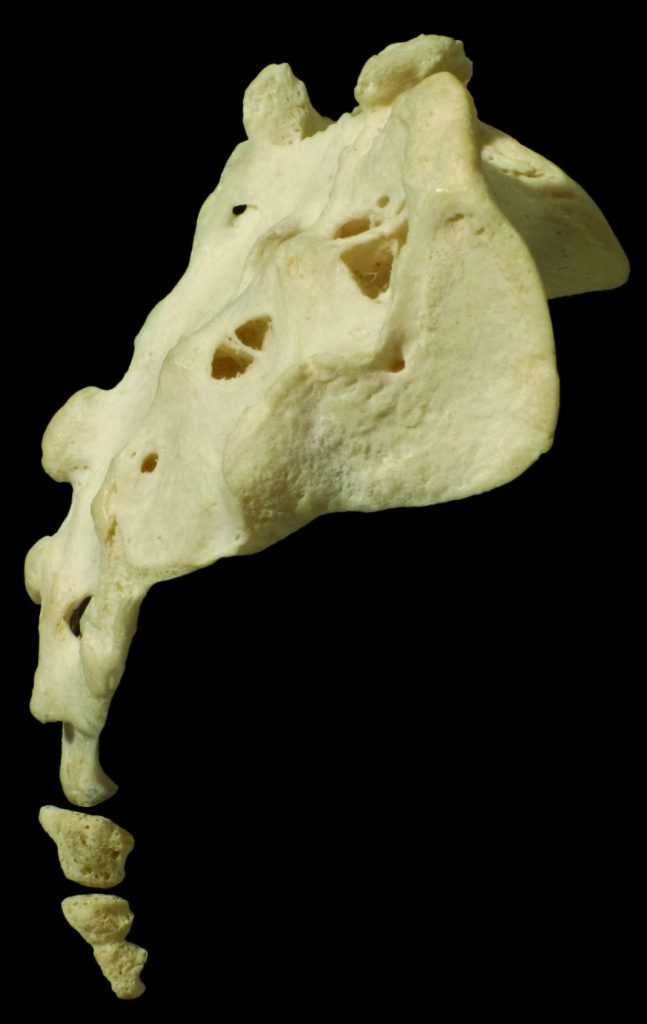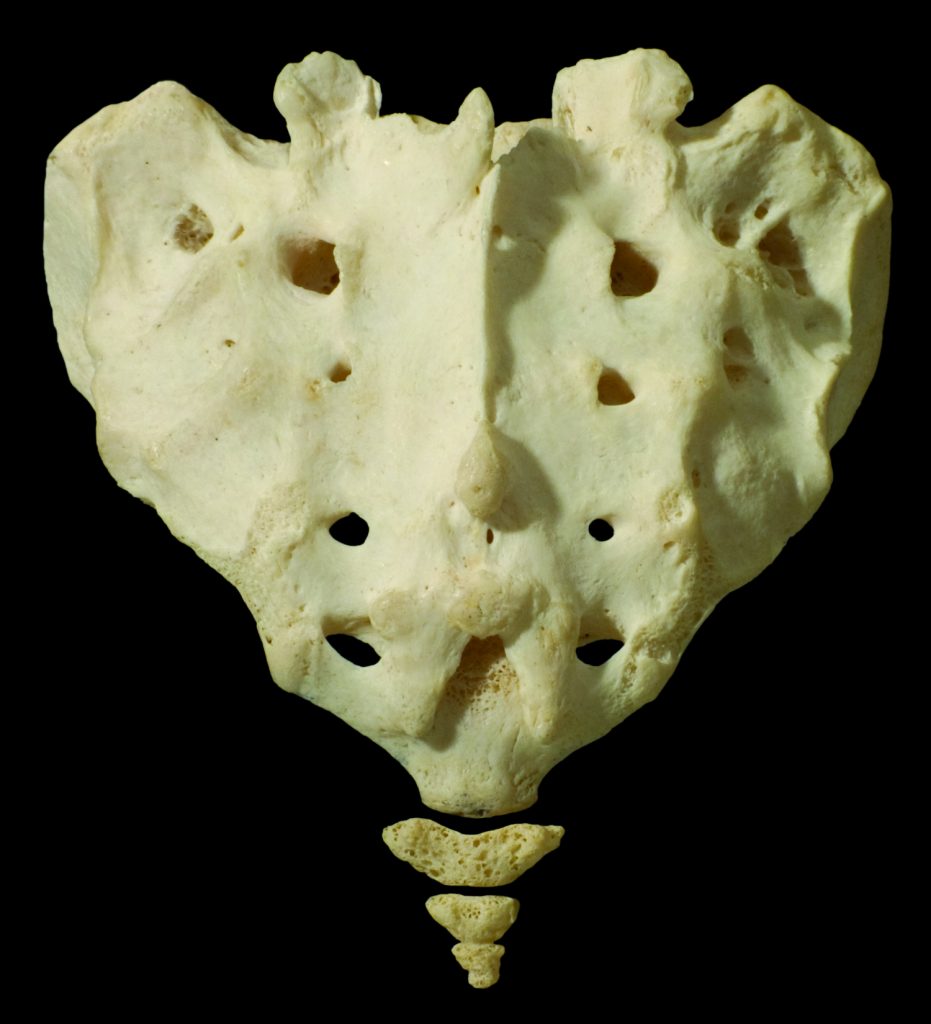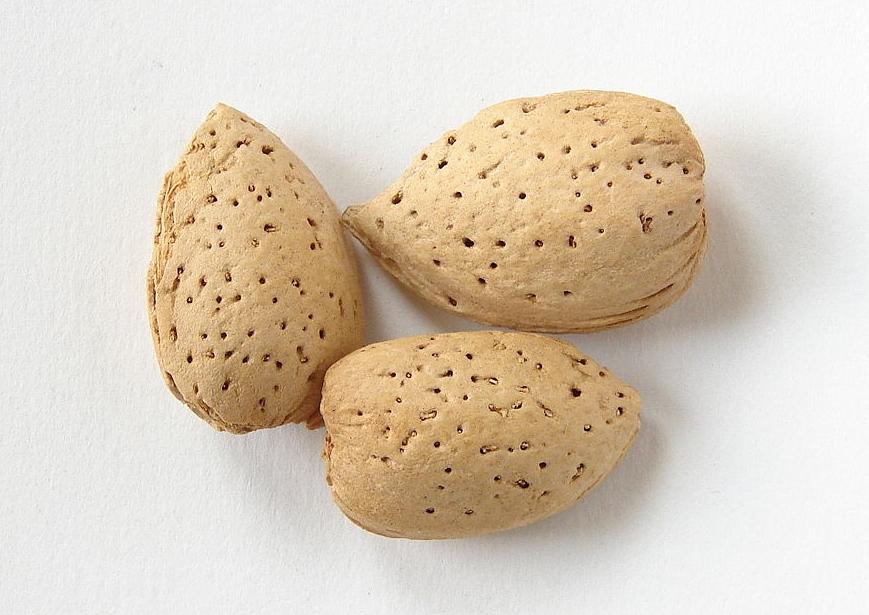The Luz — the Living Bone of Resurrection
There is a Jewish tradition that there is a bone in the human body called luz. The Hebrew word for luz, whose origin is unknown, is used only once in the entire Scripture. In the JPS translation, luz is rendered “almond”, but other translation may have it as “chestnut” or “hazel”,
And Jacob took him rods of fresh poplar, and of the almond and of the plane-tree; and peeled white streaks in them, making the white appear which was in the rods. (Gen 30:37 JPS)
The ambiguity in the translation of the Hebrew word לוּז luz comes from its use in only this verse. When a word has been used in only one place and its meaning is lost, it is difficult to translate from a single use of it, as opposed to when the word is used in many different contexts. In such a case of luz, its rendering is a matter of a personal opinion. According to the Jewish school of thought, the luz bone — a tiny bone most people are unaware of its existence — does not decay or perish; the luz bone cannot be destroyed even by fire. And when the time comes for the resurrection of the dead, the luz bone will play a major role in it.
Resurrection of Israel to new life
Chapter 37 of the prophecy in Ezekiel contains seemingly two revelations from YHVH Elohim (Eze 37:1-14 and Eze 37:15-28). But these two revelations are actually one revelation on account of the substantial connection between them. In the first part of the revelation, Ezekiel was shown in a vision the resurrection of dry bones of Israel to a new life; in the second, the reunion of the divided kingdoms into a single nation under the reign of King David. The chapter and the prophecy begin thus,
The hand of Yehovah was upon me and took me out by the wind of Yehovah and set me down in the midst of the valley. And it was filled with bones. (Eze 37:1)
Then, YHVH asked Ezekiel whether the dry bones in the valley of the dead could live again (Eze 37:3). Ezekiel answered that it was only Him who could know that. Then, YHVH said to these bones,
Behold, I will cause wind to enter into you, and you shall live. And I shall lay sinews on you and bring flesh in you and cover you with skin and put wind in you, and you shall live. And you shall know that I am Yehovah. (Eze 37:5-6)
These words of the Creator announce the raising of the dry bones to life: YHVH will clothe them with flesh and put His Breath of life in them so that they will live. But there was not yet any life in them. To give them life, the prophet was told to prophesy again, this time to Ruach רוּחַ Chayim הַיִּים, “living breath”, so that they would live again.
From the first verse on, we find a beautiful wordplay of the Hebrew word רוּחַ ruach. In Hebrew, this word means both “breath” and “wind”, as we read further in the prophecy,
And I looked and saw sinews and flesh came upon them, and skin covered them, but there was no breath (ruach) in them. (Eze 37:8)
And YHVH said to Ezekiel to prophesy to the Ruach (Wind) and say,
Thus said the Master Yehovah, “Come from the four winds, O breath, and breathe on these slain, so that they live.” (Eze 37:9)
In Eze 37:8-10, the Hebrew word רוּחַ ruach, is rendered by some “wind”, by others “spirit”, but neither of these is in accord with what precedes it. The concept of רוּחַ ruach having two layers of meaning does not mean anything else than the breath of life of the Creator YHVH Elohim. רוּחַ ruach has indeed a simile in the wind, perceptible to the human senses, but it is not identical with it. The reason being is that the natural wind itself brings no life into dead bodies. The only thing that can brings life to a dead body is the breath, Ruach, of the Creator YHVH. If, therefore, the dead bodies receive life through the blowing of רוּחַ ruach into them, what enters into them cannot be a symbol of the breath of life but must be the Breath of life itself. This heavenly Breath of life that diffuses through all nature, giving and sustaining the life of all creatures, is nothing else but the Breath of life of the Creator. Psalm 104, the hymn in honor of the Creator, sings,
You hide Your face, they vanish. You take away their breath, they die and return to their dust. You send forth Your Breath, they are created. And You renew the face of the earth. (Psa 104:29-30)
With that being said, we find that the translation “spirit” (from Latin spiritus meaning “alcohol”) is a very inappropriate rendering of the Hebrew Ruach and should not have any place in our vocabulary. The above is taught in the article The Hebrew Ruach haKodesh vs. the Roman Holy Spirit, where we argued for our claim.
The luz bone and the slain of Israel in the Holocaust
But the vision Ezekiel received does not speak of the general resurrection of the dead in which all dead will come back to life, because there are certain features that do not apply to it. In this vision, however, the resurrection of the dry bones, on account of occasion, cause, and context will be the resurrection of the nation of Israel. Ezekiel sees the resurrection of the dry bones of the slain of Israel, not the dead of the whole earth, will take place in one particular valley (see Eze 37:1-2). This is expressed in the fact that in Eze 37:9, those who are to be raised to life are called הֲרוּגִים harugim, “slain”, a word which does not apply to the dead in general, but simply to those who have been slain, perished in wars, famine, or by some other violent deaths. Therefore, it is apparent at once from this that the vision is not intended to symbolize the resurrection of all the dead, but simply the raising up of the nation of Israel that has been slain. This we derive also from the statement that the dead bones are called the “whole house of Israel”, that is, Judah and Ephraim.
The mass murder of six million Jews (of total of ten million who perished in the death camps) under the German Nazi regime from 1941 until 1945 is called “Holocaust”: the act of mass destruction and loss of life especially by fire. Nazi Germany used specially built crematoria manufactured to SS specifications in at least six extermination camps throughout occupied Poland including at Auschwitz-Birkenau, Chelmno, Belzec, Majdanek, Sobibor and Treblinka. In those Nazi crematoria the bodies were incinerated to ashes. How would they be brought back to life, if ashes are the simplest form of matter and no life (DNA) can be found in them?
Is there hope after the ashes?
The body of Adam was first shaped out of the dust, and then the soul was breathed into it. Since then, the origin of life from the Breath of the Creator has always been a mystery. Elohim created the first man in His image and since then Adam’s creation is repeated in every human being. Thus, man became the image of Elohim not in the bodily form, but by the merit of His Breath by which he became a living soul.
The ashes that remain after the incineration of a human body are the simplest form of organic matter: they cannot degrade or decay any further. Ashes do not have any DNA remained after the incineration. Ashes are the end of life of the body and all organic matter. But how can a body be resurrected without DNA — the polymer in the nucleus of a cell that is associated with the transmission of genetic information? There is indeed nothing impossible for the Creator, but even He abides by His laws of biology which He Himself has created to govern the human body. By these laws life and phenomena of living organisms in general processes. However, as a man has no knowledge of the way of the natural things, so do mystery of origin of life and resurrection of dry bones, and the works of the Creator, lie beyond his knowledge and imagination. Yet, those millions of burned bodies must be raised from the ashes of the Nazi Holocaust. How could these ten million people whose bodies were incinerated and reduced to ashes in the Nazi ovens be possibly resurrected? Are they lost forever?
The luz bone in the resurrection of the dead
There is a tradition in the Jewish school of thought regarding the enigmatic luz bone. Peninei Halakhah, Shabbat 7:7:4 states thus,
We have a tradition that there is a bone in the human body called the luz. This bone did not benefit when Adam ate from the Tree of Knowledge; therefore, even though death was decreed upon mankind as a result of the sin, this bone does not rot. At the time of the resurrection of the dead, each individual’s revival will begin from the luz.
The aforementioned luz bone, through which the body will be rebuilt and brought back to life, is the same Hebrew word luz, almond, in Gen 30:37. So, where can the luz bone likened by the rabbis to almond be in the human body? The word לוּז luz in Hebrew means “nut” or more particularly “almond”. According to the teaching of the rabbis, because of this it became associated with the small bone at the top of the spinal column, underneath the brain, on the top of the spine. It is about the size of a kernel of barley. Rabbi Isaac Luria taught that the luz bone is located in the place where the knot of the tefillin is placed, where the skull meets the back of the neck.
Likutei Moharan, Part II, Torah 85:2, further states that this is the luz bone at the back of a person’s neck that receives nourishment from Melaveh Malkah the meal eaten on Saturday night after the Sabbath ends. According to this source, the luz bone remains intact even after the body decays, and from the luz bone the body will be built anew at the time of resurrection of the dead. However, other commentators believed that the luz bone is located at the bottom of the spine. According to them luz is the bone in the spine that appears like the head of a cobra snake (as seen in the photo below), implying that is the sacrum, because the sacrum is the only bone in the spine that looks like the head of a snake.
According to Jewish tradition, this luz bone can never be destroyed or perished. And because the luz bone is imperishable, the Creator will make the body regrow from it in the resurrection of the dead, since the genetic information has been preserved in its DNA. Still on the same line of words about the luz bone, the following record is found in the collection of homiletical teachings from the third century Bereishit Rabba 28:3. We read thus,
Roman Emperor Hadrian was grinding bones. He asked Rabbi Yehoshua ben Chananiah: “From where does the Holy One, Blessed be He, reconstruct man in the future to come?” Rabbi Yehoshua answered: “From the luz [bone] of the spine.” Hadrian said: “From where do you know this?”. He said: “It has come to me as a tradition, and I will show you.” They tried to grind the luz bone in a mill, but it was not ground. They burnt it in fire, but it was not consumed. They put it in water, but it was not softened. They put it on an anvil, and he started to beat it with a hammer, but the anvil slipped, the hammer was broken, and it remained intact.
Cremation or burial of the dead
The Torah teaches in Deu 21:23 that a body must be buried on the same day of death, because the unburied body is a curse to Elohim. This Torah command comes with both a positive side to bury a dead body and a negative side forbidding neglecting to bury it. We read,
Let his body not remain overnight on the tree, for you shall certainly bury him the same day – for he who is hanged is accursed of Elohim – so that you do not defile the land which Yehovah your Elohim is giving you as an inheritance. (Deu 21:23)
This command is grounded in the foundational view in the Torah that the body is created in the image of Elohim. As it was taken originally from the earth, it is to return to the earth again. During the human history, cremation was practiced mainly in cases of war, a pestilence or famine, and where there was an imminent threat of diseases spreading from the corpses. But in its origin, cremation is purely heathenish. Cremation was the main practice among pagan Greeks and Romans, and today by the Buddhists, some liberal Jews, and many Christians.
As a pagan practice cremation is viewed in Judaism as disgrace to the body that bears the image of the Creator. Cremation is also largely viewed by the Jews as an insidious denial of the doctrine of the resurrection of the dead. By cremating the dead, one shows no faith in the world to come. But even though a body is incinerated to ashes and thus completely destroyed, yet a tiny little bone remains alive — the luz bone — the living bone of resurrection.
Knowledge known to only a few will die out. If you feel blessed by these teachings of Time of Reckoning Ministry, help spread the word!
May we merit seeing the coming of our Mashiach speedily in our days!
This page contains sacred literature and the Name of the Creator. Please, do not deface, or discard, or use the Name in a casual manner.




